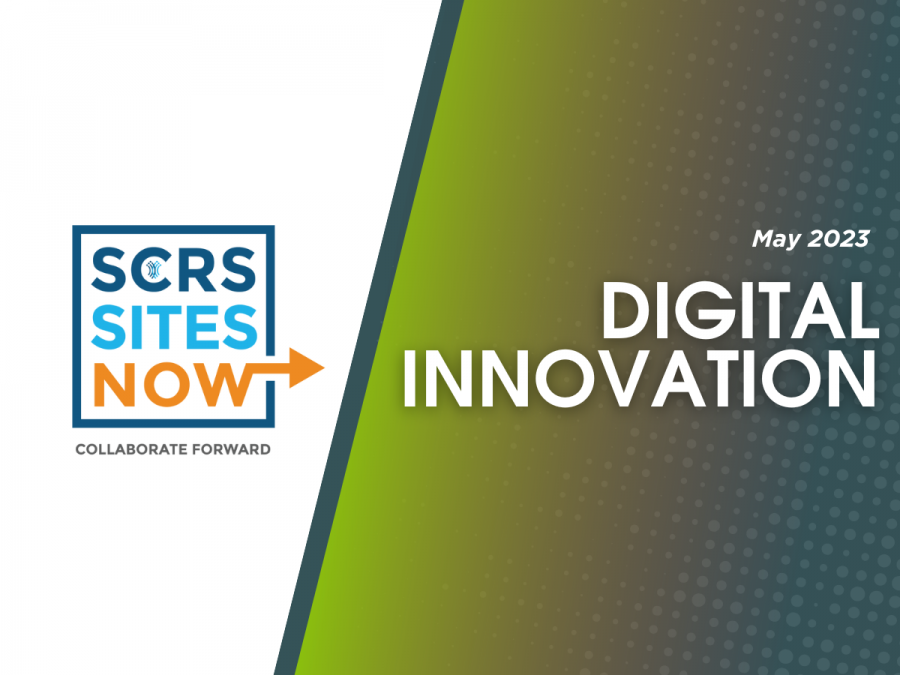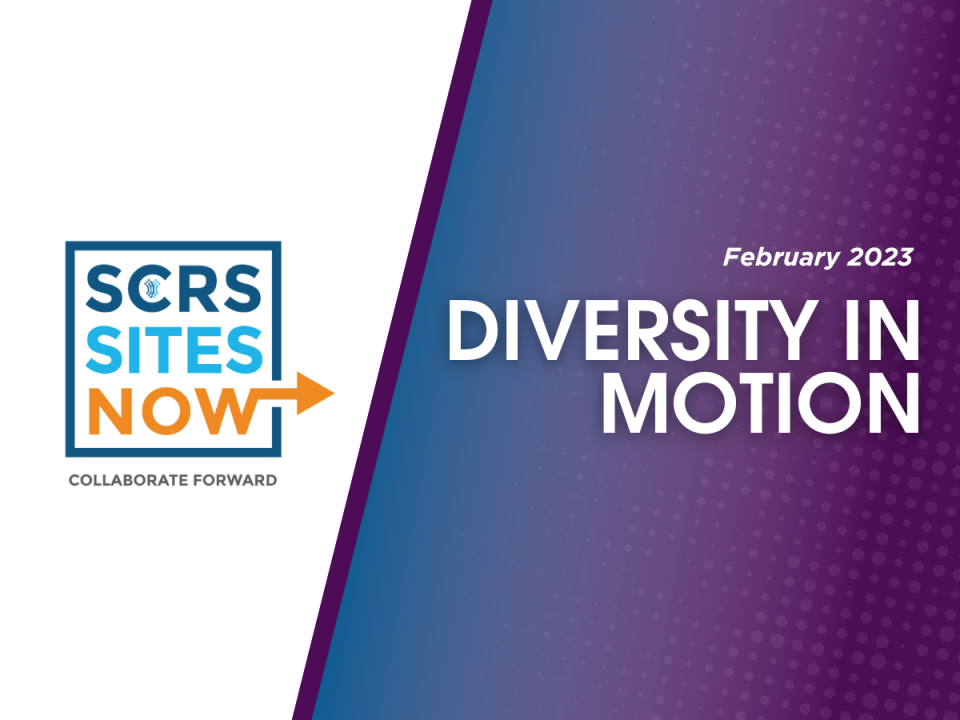Digital Innovation: Creative Cures for Tech Congestion

Every industry relies on technology for progress, but in the life science ecosystem, it truly impacts the work we do. Of course, technology often also comes with challenges such as complexity, uncertainty, resistance, cost and skills gaps. How can we overcome these challenges and succeed in our digital transformation journey? This edition of Sites NOW explored all things digital innovation, including creative ideas and cures for tech congestion.
Navigating the Implementation of New Technologies in Clinical Research
Mohammad Millwala from DM Clinical Research firmly believes that sites should embrace a technology strategy. He emphasizes that by adopting technology, sites can chart their own destiny instead of relying on external sources. He sees technology as a solution for growth and business sustainability. As a people-centric business, technology should be there to support the efforts of the sites and ultimately, their patients.
Millwalla added, “If sites don’t embrace technology, it will be imposed on them. By embracing technology, we can shape our own destiny instead of relying on a mix of technologies from elsewhere.”
In the fast-paced world of clinical research, the adoption of new technologies is often a necessary step towards progress. However, the process of onboarding and integrating these systems can present challenges for research sites.
Vivienne van de Walle from PT&R highlighted the multitude of vendors and platforms that research sites often encounter when starting a new trial. She likened the experience to being trapped in a challenging escape room, emphasizing the need to find solutions that work seamlessly for sites and the various trials they manage. A streamlined startup process is essential to accelerate research rather than impede it.
The COVID-19 pandemic acted as a pressure cooker, necessitating the rapid implementation of various technologies overnight. In some cases, research sites were moving ahead faster than the sponsors, as critical decisions had to be made promptly for the benefit of patients. To navigate this accelerated pace, van de Walle adopted a proactive approach.
One of the key steps she took was to undergo all the necessary trainings upfront. She requested sponsors to provide access to trainings and portals, enabling her to evaluate and assign the most suitable staff members for each platform or vendor. This approach ensured that the necessary expertise was available within her clinic and streamlined the onboarding process. Additionally, she invested time in understanding the time commitment required for training and implementation, considering the impact on clinic operations.
Van de Walle also created a system to manage the multitude of vendors and platforms encountered during trial startup. To achieve this, she developed a comprehensive Excel sheet that listed all potential vendors and requested information from sponsors and CROs. This included the vendor’s URL, sponsor’s name, and estimated time required for training.
Having access to this consolidated information enabled her team to identify specific vendors and platforms required for each trial. With multiple trials in progress simultaneously, this oversight proved invaluable in streamlining operations and ensuring the right technologies were utilized for each study.
While acknowledging that the Excel sheet is not a standardized document due to the ever-evolving nature of the industry, it serves as a useful tool for adapting to new trials and incorporating additional vendors. Other sites participating in the discussion echoed that they also had a similar document for tracking vendors and portal logins.
Open communication with solution providers is essential in understanding the cost implications and gauging the overall impact of system adoption. Van de Walle personally reaches out to vendors, especially those she has met at industry events. This direct contact allows for discussions about their technologies and the potential for adaptation. However, some vendors may direct such conversations to the sponsor, highlighting the need for flexibility and collaboration in this rapidly changing landscape.
Lydia Beaudette from Centricity Research also reinforced the need for organized tracking of portals and associated training requirements. The integration of such tracking systems into sponsor-site platforms enables seamless communication and provides visibility into training requirements and estimated timeframes. If sponsors and CROs make this information proactively available, sites can include it in budget discussions and be fairly compensated for the work involved.
On the Frontline of Customer Service
All industry stakeholders share the common goal of supporting patients and ensuring the smooth progress of trials. To achieve this, Millwala advocated for the establishment of a more robust customer service team dedicated to assisting sites. This team would address various challenges, such as technical malfunctions and screen failures, which can impede trial progress.
Dr. Margarita Nunez from Synexus Clinical Research reflected on the incredible transformation of trial processes facilitated by technology. Prior to 2019, technology was sporadically used for specific trial purposes as requested by sponsors. However, the pandemic necessitated a reevaluation of existing practices and compelled many sponsors to embrace technology more comprehensively. Dr. Nunez shares that her site had primarily relied on paper-based sourcing for a long time. The transition to efficient digital signing has been a welcome change, although the effectiveness depends on the chosen vendor, as sites are dependent on the sponsors’ decisions.
Nevertheless, Dr. Nunez acknowledges that incorporating technology into the lives of older patients can be demanding. Patients may require extensive guidance and support to navigate digital tools and data collection methods. Ensuring patients’ proficiency in using study technology has become an integral part of the screening process, including the ability to maintain electronic diaries or download relevant applications. This additional time and effort invested in facilitating patient technology literacy often go uncompensated.
While the integration of technology has greatly expedited and improved various aspects of research, it is crucial to recognize the need for adequate compensation for the time and resources invested in patient education and support. Balancing the benefits of technology with the unique requirements of patients across diverse demographics remains an ongoing pursuit in the pursuit of efficient and patient-centric clinical research.
Customer service emerges as a fundamental aspect of the research process, ensuring that sites receive the necessary support to navigate technology-related challenges. Millwala underscored the need for a robust customer service contact or team to assist research sites effectively. He commented on the frustrations that arise when a diary malfunction or technical issue leads to a screening failure, jeopardizing the progress of the trial. Such situations often result from factors unrelated to the site or the protocol itself. However, with reliable customer service from the vendor, these challenges can be promptly addressed, mitigating potential setbacks and preventing the loss of valuable study participants.
Anticipating Roadblocks
An ideal solution for all is to involve sites during the planning stage of a trial. This collaborative approach empowers research sites, enhances their understanding of the technology, and aligns the system with their specific needs and workflows. By engaging sites early on, teams can proactively address potential errors and optimize the use of technological portals. This also reiterates the importance of accurately assessing the performance of vendors’ products and ensuring they meet the necessary standards for both sites and patients.
This collaboration between technology vendors and sites fosters a more comprehensive understanding of trial requirements and helps prevent issues that could compromise patient inclusion.
Furthermore, Millwala advocates for comprehensive training for site staff on the various technology platforms employed in clinical research. Given the rapidly evolving landscape of study technology, continuous education is essential to ensure optimal utilization and compliance. However, he highlights the importance of appropriate reimbursement for training efforts. Aligning reimbursement with training requirements would not only encourage sites to participate actively but also acknowledge the investment of time and resources involved in enhancing staff proficiency. Payment for training should not be an afterthought but rather a part of the budgetary process.
Developing the Next Generation of Trial Technology
There are many opportunities to save time and reduce confusion for all parties by implementing simple changes. By keeping all parties informed, maintaining open communication, and developing systems that can integrate with one another, sites, CROs and sponsors can establish practices that optimize the integration of new technologies, ultimately enhancing the efficiency and success of their trials.
One attendee also shared that they have suggested that sponsors consider the technologies adopted by sites themselves. It is noteworthy that sites are increasingly incorporating their own technologies, such as eSource, to streamline their operations. Sponsors could evaluate sites’ vendors and pre-approve them as trusted partners. It would be advantageous for sites to know that the sponsor has vetted and approved the use of specific technology solutions. Moreover, this process would enhance sponsors’ familiarity with the functionality of these technologies, potentially leading to integration with other selected components of the trial execution.
Beaudette agreed, “I really do think, from a site perspective, there’s responsibility for us as well in embracing technologies that make sense and then advocating for how those can best connect.”
Creating a culture of collaboration and customer service in clinical research technology is crucial for improving trial outcomes and streamlining operations. By prioritizing robust customer service support, involving research sites during trial planning, and providing adequate training opportunities, the industry can optimize the use of technology and promote a more efficient research environment.
Open innovation is the practice of collaborating with partners, customers, and suppliers to source and share what is being done, what’s working, and what might work for the market in general. This concept allows all stakeholders to gain access to new ideas and capabilities that perhaps wouldn’t have been considered internally, while also helping reduce costs and accelerating time to market, ultimately increasing customer satisfaction. That’s what we aim for at every SCRS Summit. We welcome everyone to participate in an SCRS event and share their challenges and ideas so we can move clinical trial technology forward together.
Through shared responsibility and mutual understanding, stakeholders can collectively work towards advancing clinical research and ultimately improving patient outcomes. It is in this spirit of collaboration that the potential of technology in clinical research can be fully realized.



